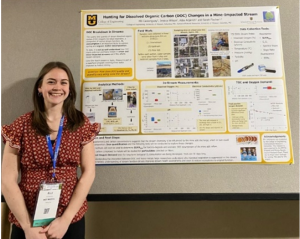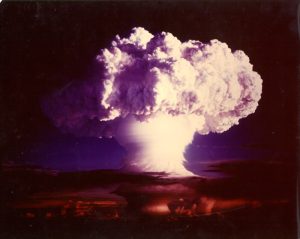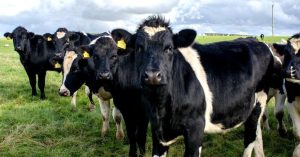
Hunting for Changes in Dissolved Organic Carbon (DOC) in a Mine-Impacted Stream
The intent of this research is to shed new light on a historic topic by analyzing how the quality and quantity of dissolved organic carbon (DOC) changes along the Lone Elm Stream. Dissolved organic carbon is an important nutrient source for aquatic organisms.

Using Trail Cameras to Study White-Tailed Deer Vigilance Behavior Within an Agroforestry Landscape
To understand how deer navigate and behave across agroforestry systems, 14 wildlife camera traps were installed within five natural (edge, open, wooded) or farmed (orchard, pasture) environments

Evaluating Rainfall-Runoff Processes in Missouri Watersheds
Watershed simulation models are valuable tools to evaluate the impacts of changing weather patterns and land management on the hydrologic cycle.

Determining the Natural State of Origami folds with Machine Learning
Origami-inspired designs have found applications in several engineering domains, from aerospace to biomedical. These designs excel in applications that require lightweight, compact, and morphing structures such as the retracting wings of insects or the solar sails on satellites.

Development of automated sensors to track pH changes elicited by iron deficiency in hydroponic cultures
We developed an automated pH tracking system to monitor pH changes in hydroponic systems. As a proof of concept, we tracked the acidification of media on maize plants grown over a week with and without Fe.

Atrazine: An Issue Needing Action
After application, rain causes runoff of the atrazine into Mark Twain Lake and the watershed. Thus, those who live in the watershed are indirectly responsible for polluting their water as they are the ones who use atrazine in their fields.

A Plan for Plastics
Consumption of plastic and efforts to reduce plastic waste have been a popular topic of the past year. When a video showcasing plastic straw litter went viral, many businesses, such as restaurants and dining chains, stopped providing plastic straws unless by request. Struck by the amount of plastic in the ocean, many took a pause…

Science of Environmental Effects of Nuclear War
The only atomic bombs to ever be used outside of testing were those used by the United States in Hiroshima and Nagasaki to end the Second World War. These blasts exploded with the force of about 15 kilotons and 21 kilotons of TNT respectively (World Nuclear Association, 2016). The total nuclear arsenal in the world…

Breakthrough Biotechnology in Animal Agriculture
A recent article published by the Washington Post articulates that new gene-editing practices in farm animals may be one of the largest research breakthroughs, though society may not be prepared for such a change (Johnson, 2018). Biotechnology, the genetic manipulation of living organisms, has made progress in the animal agricultural industry, but so has the…

A-po(pulation)-ca-lypse- The Danger of Overpopulation on the Environment Within America
Many reasons for the “apocalyptic” demise of the Mayan civilization have been hypothesized including the occurrence of a severe drought, thought to be exacerbated by rapid deforestation. Extensive logging was conducted to clear the land for growing more food and for producing construction materials needed to accommodate the growing population’s cityscape, further magnifying the environmental…